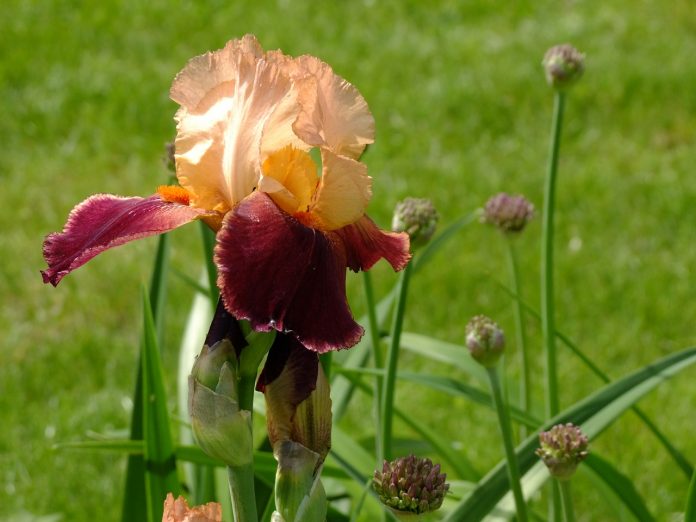Some gardeners believe the best time to divide spring- and summer-blooming perennials is in the fall, while other think April or May, right after the plant finishes flowering, is an ideal time. The short answer is that it depends on the size, health and life cycle of the plant.
Plants to divide in the fall
When deciding which plants to divide in the fall, there are a few hard and fast rules to follow.
- Never divide fall-bloomers. Plants that bloom in the fall should always be divided in the spring when new growth is emerging. Spring offers optimum conditions for dividing fall bloomers — cool weather, optimum moisture and good timing. The plant’s root system has enough energy stored to recover from being cut apart and being replanted.
- Divide spring and summer perennials that need it. Signs that your spring and summer bloomers need to be divided include smaller flower size, a dead spot in the center of the plant, less vigorous plant growth, outgrowing its space in the garden and sparse bottom foliage.
- Make fall divisions between mid-September and mid-October. You want to allow at least 6 weeks of root growth after dividing plants to allow roots to become established. Mid-September to mid-October is an ideal time to divide perennials because it gives roots enough time before the ground freezes.
How to divide perennials in the fall
Once you’ve identified plants that need to be divided, your success depends on proper preparation, identifying different root systems and handling them according to their individual needs. Use these tips to successfully divide and transplant your plants this fall.
Preparing plants to divide. A couple of days before you plan to divide your plant, take the time to prepare both the plant and the site where you’ll be placing your divisions.
Plant
- Water thoroughly two days prior to division.
- Cut back stems and foliage to 6 inches from the ground.
Site
- Make sure the area you’ve chosen for your divisions is well-drained and fertile with a pH between 6 and 7.
- Add some organic matter to the soil to improve texture and water-holding capacity.
- Dig a hole wide enough to accommodate the division’s roots and deep enough so that the crown of the plant will be even with the soil’s surface once it’s been placed.
Dividing perennials. Once you’ve prepared both the site and plant to be divided, you’re ready.
- Use a spreading fork to loosen the roots and pry underneath the plant on all four sides.
- When the roots have been freed around the edges, lift the entire clump free.
- Shake or hose off loose soil.
- Identify the root system and treat it accordingly.
- Spreading root systems. Think of grasses, tickseed and any other plant with matted roots. These types of root systems can be pulled apart by hand, cut apart with a sharp knife or, in the case of larger plants, separated by placing two digging forks back-to-back and prying them apart. After you’ve divided the plant into clumps of three to five shoots and discarded the center if a dead spot existed, you’re ready to transplant.
- Clumping root systems. Plants with clumping roots systems are made up of several eyes or buds — think of hostas and daylilies. They can be split by cutting through the crown with a sharp knife or shovel or by prying them apart with back-to-back digging forks. You can divide to one bud per division if you want more plants, but keep in mind it may take a year or two for these divisions to become established and flower. If you want flowering plants sooner, keep several buds with each division. Transplant your new divisions at the same depth as they were previously growing.
- Rhizomes. Rhizomes are a root system characterized by stems growing horizontally at or above ground level. The bearded iris is the most well-known plant with this type of root system. If you plan to divide rhizomes, you need to check for and cut out any sections that have been damaged by insects or disease before splitting the plant. When you make your divisions, each one should retain few inches of the rhizome and one fan of leaves that has been trimmed back by one half. Then replant rhizomes with the top showing just above soil level.










